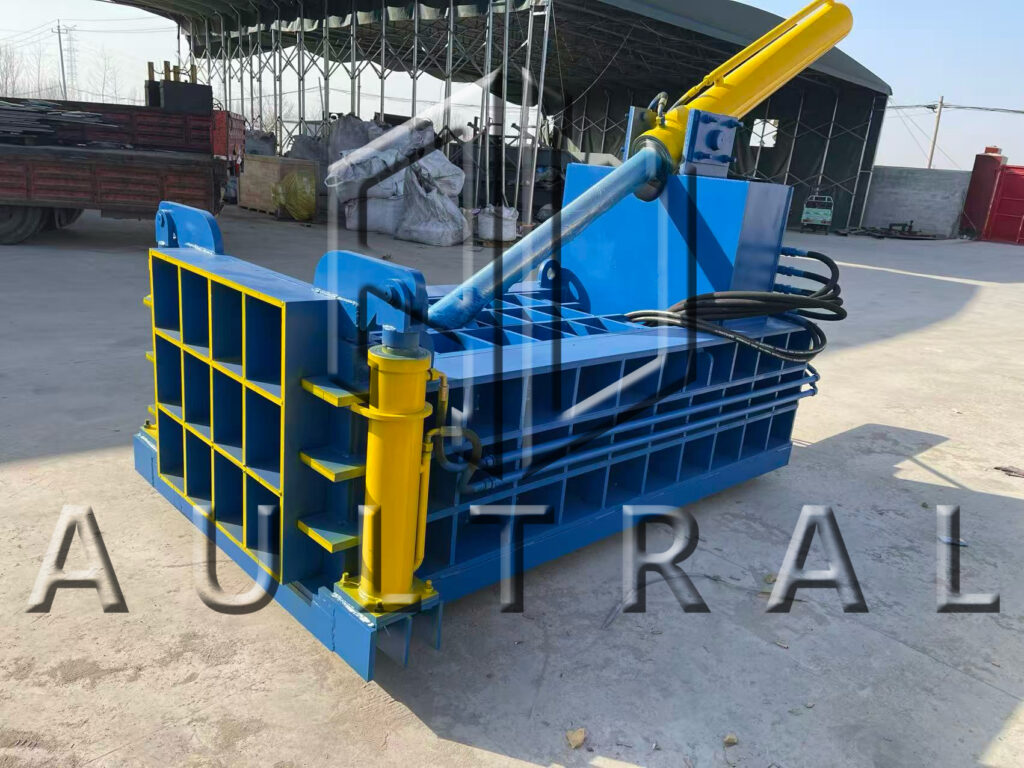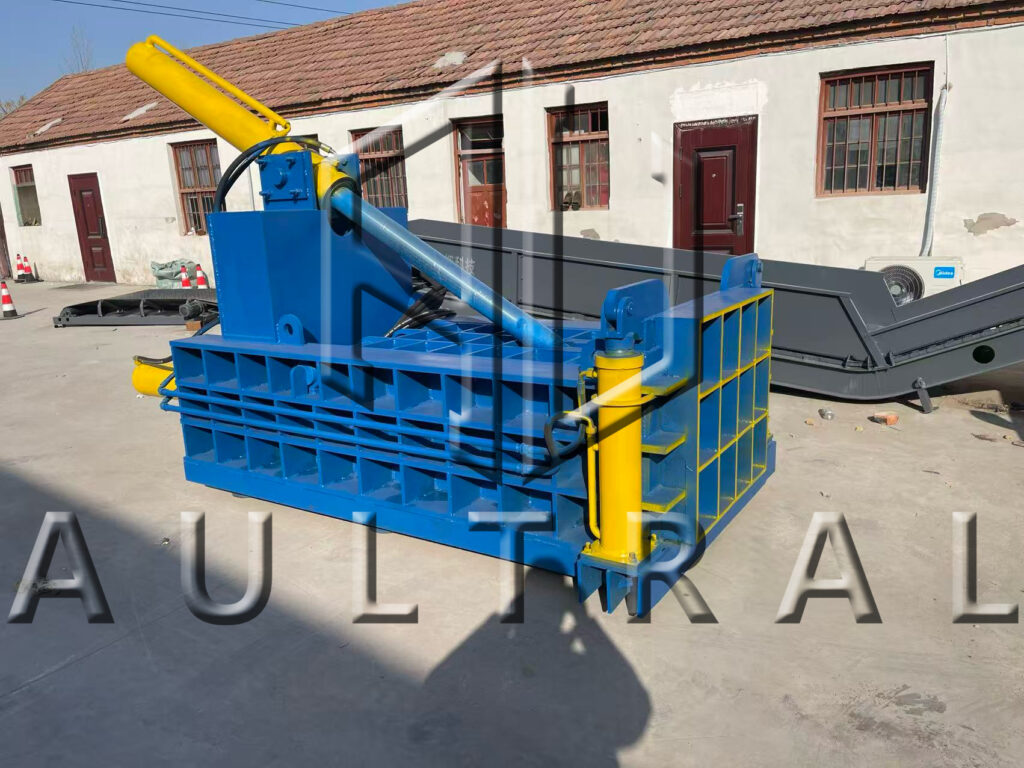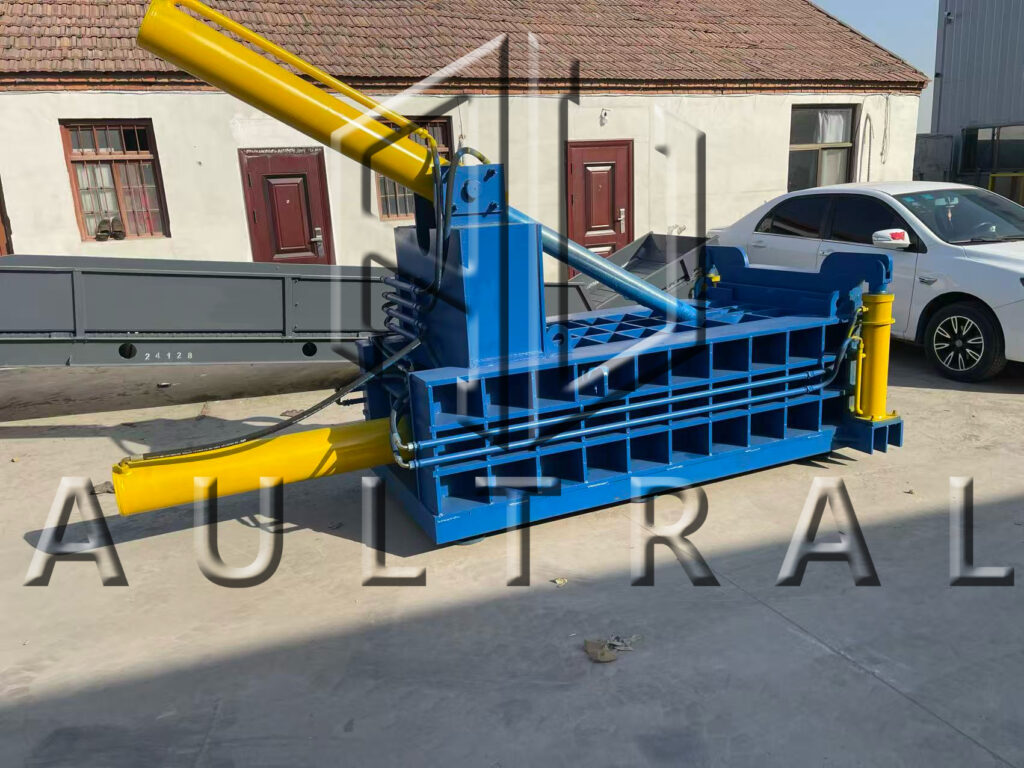What Is a Metal Baler?

A metal baler, also known as a metal briquetting or baling machine, is a type of heavy-duty hydraulic equipment designed to compress and bundle scrap metal into dense, uniform blocks or bales. By applying powerful hydraulic force, the machine reduces the volume of loose and irregular metal materials, making them easier to handle, transport, store, and recycle.
Metal balers are widely used in industries such as recycling, steel manufacturing, metal processing, and waste management. They can handle a variety of scrap metals, including:
-
Ferrous metals: steel, iron sheets, car bodies, and structural steel waste.
-
Non-ferrous metals: aluminum, copper, brass, zinc, and other valuable metals.
The compressed bales produced by the machine are typically rectangular or cubic in shape, with adjustable sizes depending on the machine type and user requirements. Some advanced models can even achieve automatic feeding, compression, and bale ejection, which reduces labor costs and increases efficiency.
In short, a metal baler transforms messy and bulky scrap metal into manageable, transport-friendly blocks, creating value in industries where space, logistics, and recycling efficiency are critical.
Why Use a Metal Baler?

(1) Efficient Space Utilization
Loose scrap metal takes up a huge amount of storage space. A pile of discarded aluminum sheets or iron scraps can quickly fill a warehouse yard. By compressing these materials into dense bales, companies can reduce storage volume by up to 70–80%, making space utilization much more efficient.
(2) Cost Savings in Transportation
Logistics costs are often calculated based on volume and weight. Transporting uncompressed scrap metal means fewer materials can fit into a truck or container, leading to high costs. Baled metal allows for higher load density, reducing transportation costs significantly.
(3) Added Value for Recycling
Scrap buyers and recycling companies prefer baled metal because it is cleaner, more uniform, and easier to process in melting furnaces. Baled non-ferrous metals such as copper or aluminum often fetch higher market prices compared to loose scrap, directly increasing revenue for recyclers.
(4) Environmental Benefits
Proper handling of scrap metal reduces waste pollution and promotes a circular economy. By baling and recycling, industries help reduce the demand for raw ore mining, cut down on CO₂ emissions from production, and conserve natural resources.
(5) Safer Work Environment
Uncompressed scrap metal often has sharp edges and irregular shapes, creating hazards for workers during collection and handling. Baled blocks are compact and stable, reducing the risk of workplace injuries and making material handling safer and more organized.
(6) Compliance with Regulations
In many countries, industrial and recycling businesses are required to follow strict regulations regarding waste storage and disposal. Using a metal baler ensures compliance with environmental and safety laws, avoiding potential fines or legal complications.
Overall, a metal baler is not just a machine—it is an investment that brings economic, environmental, and safety benefits to businesses involved in metal recycling and waste management.
How to Use a Metal Baler?

While specific operating steps may vary depending on the machine type (manual, semi-automatic, or fully automatic), the general process of using a metal baler follows a structured workflow.
(1) Preparation Before Use
-
Check the machine: Inspect hydraulic oil levels, power connections, and mechanical components to ensure everything is in working condition.
-
Safety measures: Operators should wear protective gloves, helmets, and safety glasses. Clear the working area to prevent accidents.
-
Material sorting: Although metal balers can handle mixed scrap, it is recommended to separate ferrous and non-ferrous metals for better recycling efficiency.
(2) Loading the Scrap Metal
-
The machine is equipped with a feeding box or chamber where the scrap is loaded.
-
Depending on the machine size, loading can be done manually (small balers) or via conveyor systems, grab cranes, or forklifts (large industrial balers).
-
Some advanced models come with an automatic feeding mechanism to improve productivity.
(3) Compression Process
-
Once the scrap is in the chamber, the operator initiates the compression cycle through a control panel or joystick.
-
The hydraulic cylinders apply high pressure to compress the loose scrap into a compact bale.
-
Machines typically offer single-direction, double-direction, or triple-direction compression for maximum density.
(4) Bale Formation and Ejection
-
After compression, the machine forms a uniform bale.
-
Bale size can often be customized depending on client needs—for example, 300×300mm small cubes for easy melting or larger rectangular blocks for transport.
-
The completed bale is ejected either manually or automatically onto a pallet or conveyor for storage and shipping.
(5) Post-Operation Checks
-
Inspect the bale quality—uniform density and shape indicate proper operation.
-
Clean the feeding chamber to prevent jamming or residue build-up.
-
Shut down the machine safely when not in use.
(6) Maintenance Tips
To ensure long-term reliability and efficiency, regular maintenance is crucial:
-
Monitor and replace hydraulic oil as needed.
-
Check for wear and tear on seals, hoses, and cylinders.
-
Sharpen or replace cutting blades (for balers with shearing functions).
-
Schedule periodic inspections by trained technicians.
Conclusion
The metal baler is an essential machine in today’s recycling and metal processing industries.
-
What it is: A hydraulic machine that compresses scrap metal into dense bales.
-
Why use it: To save space, reduce costs, improve recycling value, enhance safety, and support environmental sustainability.
-
How to use it: Load, compress, bale, and maintain with proper safety and operational practices.
By adopting metal balers, businesses not only maximize profits but also contribute to a cleaner environment and a sustainable circular economy. Whether you are a small scrapyard or a large recycling facility, investing in a metal baler is a step toward smarter, greener, and more efficient operations.
